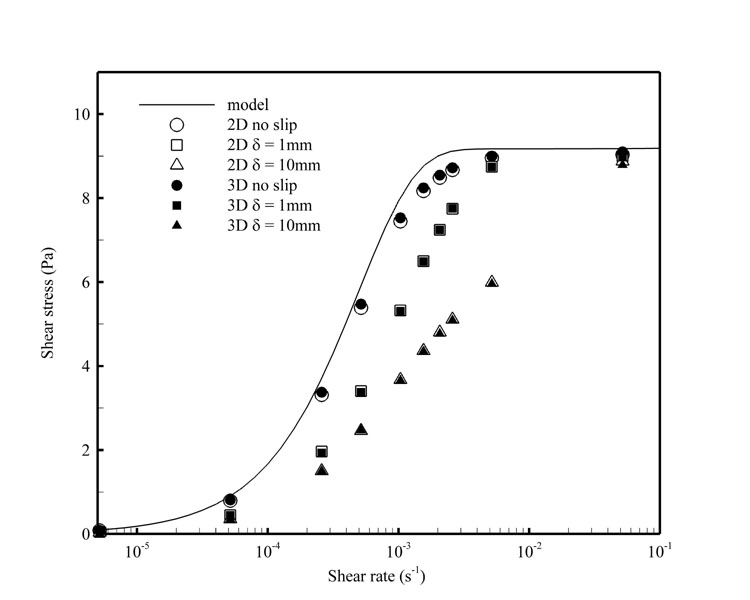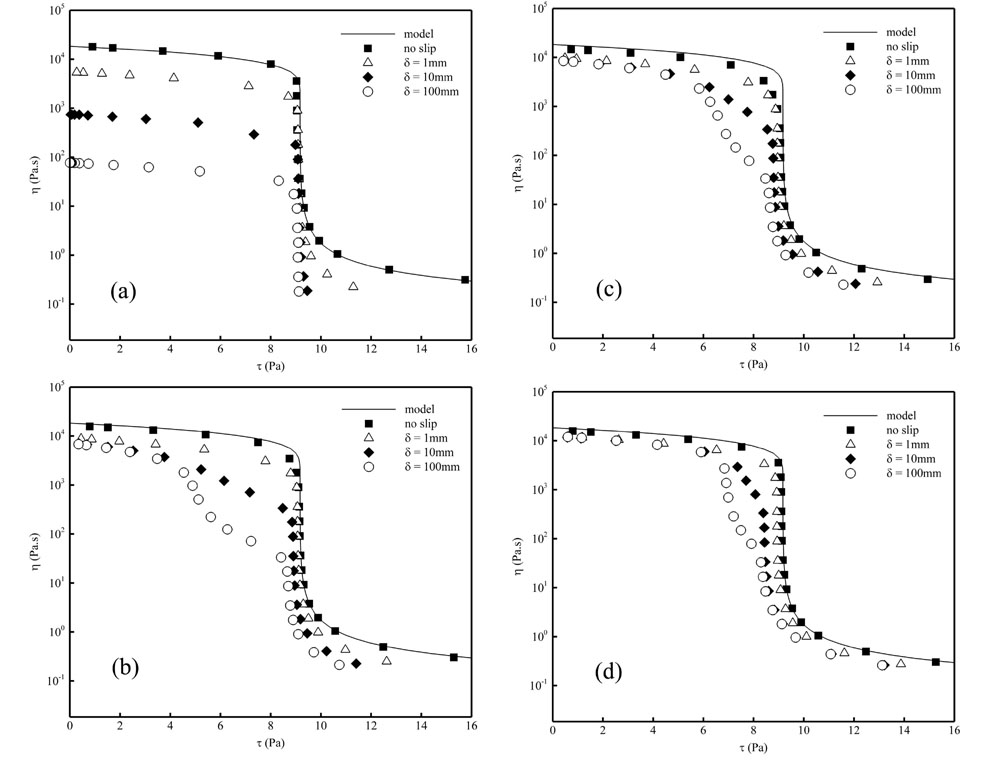AmericanChemicalSociety.com
Reports: AC9 48276-AC9: Yield Stress of Complex Fluids: A Numerical Study for a Concentric Cylinder Geometry with Slotted Rotor
Daniel De Kee, Tulane University
We have developed 2-D and 3-D computational fluid dynamics (CFD) models for steady state flow fields in a double concentric cylinder rheometer with a slotted rotor (DCCR/SR). Using these models, we determined the mechanisms for wall slip reduction and studied the effect of the slot geometry on wall slip reduction.
Figure
(1): Geometry of the double
concentric cylinder rheometer with and without a slotted rotor Figure (1)
illustrates the geometry in which both a conventional Couette rotor (no slots)
and a slotted rotor are displayed.
The slotted rotor design is mainly determined by two parameters: the
slot ratio S (defined as the ratio of
total area of the slot regions to the rotor side wall area) and the number of
slots N. The constitutive model used in the numerical
study of yield stress fluids is a modified Bingham fluid model which was first
proposed by Papanastasiou (1987) and later modified by Zhu et al. (2005): The
values for the model parameters,
Here vs is the slip velocity
(i.e., the relative velocity of the fluid at the wall surface),
Figure (2) illustrates the differences in the predicted
shear stress values between the 2-D and 3-D models for a slotted rotor geometry
with slot ratio S = 0.5 and slot
number N = 18 as a function of wall
slip conditions. The model (Eq. 1)
shows that the shear stress ¦"
increases very quickly with strain rate
Figure (2): Comparison between 2-D and 3-D numerical
simulation results for different wall slip conditions. The apparent viscosity of the yield-stress fluid is plotted versus
the shear stress for rotors with different S
and N in Figure (3). For the non-slotted
rotor with no wall slip,
Figure (3): Prediction of the apparent viscosity as a
function of shear stress for different slot ratios and slot numbers, according
to the numerical simulation (symbols) and the theoretical model [Eq. (1), solid
curve]. (a) S = 0, N = 0; (b) S =
0.5, N = 18; (c) S =
0.7, N = 18; (d) S =
0.7, N = 72 These results indicate the best agreement with the model
curve is achieved with a non-slotted rotor with the no wall slip, since no
secondary flow can occur.
An increase in S under the no-slip (or very small slip) conditions will result in a
slight deviation of the apparent viscosity from the model curve. With an increase in slip length

![]()
![]()
![]()
![]()
![]()
![]()
![]()
![]()
![]()
![]()
![]()
![]()
![]()
![]()
![]()
![]()
Copyright © American Chemical Society



